NASA’s Cosmic Time Machine: The James Webb Space Telescope
Our universe is a wild and wonderful place. Join NASA astronauts, scientists and engineers on a new adventure each week — all you need is your curiosity. Visit the Amazon rainforest, explore faraway galaxies and dive into our astronaut training pool. First-time space explorers welcome.
About this Episode of NASA’s Curious Universe
The James Webb Space Telescope will explore every phase of cosmic history: from the formation of the very first galaxies in the early universe, to our cosmic backyard of the Solar System. Webb is the largest space telescope NASA has ever built and it is almost ready to make its journey about one million miles from Earth.
AMBER STRAUGHN: The James Webb Space Telescope is really being built to answer some of the biggest questions in astronomy today. These are questions that almost everyone asks at some point in their life for questions like, where did we come from? How did we get here? Are we alone in the universe?
HOST PADI BOYD: This is NASA’s Curious Universe. Our universe is a wild and wonderful place. I’m Padi Boyd, and in this podcast, NASA is your tour guide!
HOST PADI BOYD: For 25 years, scientists and engineers from around the world have been working to design and build a revolutionary window into the early universe: NASA’s James Webb Space Telescope.
AMBER STRAUGHN: The James Webb Space Telescope will be the biggest and most complex telescope that NASA has ever built.
HOST PADI BOYD: It’s a telescope that will test the boundaries of human ingenuity to find and probe some of the farthest objects, and reveal new details about some closer to home.
HOST PADI BOYD: In late December of 1995, as kids unwrapped their holiday presents, the Hubble Space Telescope pointed towards a small region inside the big dipper and stared for 10 days. To the naked eye it was an empty patch of sky, but that’s not what Hubble saw.
ERIC SMITH: This little blank piece of sky was found to have thousands of galaxies in it.
HOST PADI BOYD: That’s Eric Smith. He’s the Program Scientist of the James Webb Space Telescope. The image he’s talking about … the Hubble Deep Field … was packed with galaxies of different shapes, colors and sizes.
HOST PADI BOYD: For the first time, we saw what the universe looked like almost all the way back to when it formed. Almost.
ERIC SMITH: Astronomers learned that none of those galaxies were the first galaxies to form. And they realized then that as fantastic as Hubble is, it wasn’t the right instrument to detect those first galaxies. And so this early measurement of Hubble pointed to where its successor needed to go technically.
[Fade out Music]
HOST PADI BOYD: The Hubble Deep Field image made scientists wonder… What if we created a telescope that could detect those baby galaxies?
HOST PADI BOYD: So scientists and engineers at NASA began designing a new tool that would be bigger and more sensitive, the James Webb Space Telescope. It will see deeper into space then we ever have before.
HOST PADI BOYD: And the farther we can see in space, the farther we can also see in time. That’s because telescopes are like time machines.
AMBER STRAUGHN: … And that’s not a metaphor, that’s actually literally true.
HOST PADI BOYD: Amber Straughn is a project scientist for the telescope.
AMBER STRAUGHN: That really stems from the fact that light takes time to move through the universe. If you look at a light bulb across the room or look at a street lamp across the street, the light from those light bulbs takes a tiny fraction of a second to travel across the room to get your eye. And so you’re sort of seeing that light bulb as it was a tiny fraction of a second ago.
AMBER STRAUGHN: So you can sort of think about things that are more distant, you know, the light from the sun takes about eight or nine minutes to get to the Earth. So we’re seeing the sun as it was eight or nine minutes ago.
AMBER STRAUGHN: The Webb telescope, one of the most fundamental and most crucial things it will be able to do is look back into time and see some of the very first galaxies that were born after the Big Bang.
AMBER STRAUGHN: That’s looking at a part of space that we’ve never seen before.
HOST PADI BOYD: Looking at baby galaxies will give us an idea of how our own galaxy formed.
HOST PADI BOYD: And there are a few things that make Webb perfect for getting a glimpse at them. The first, is its sensitivity.
AMBER STRAUGHN: A lot of the things that we’re trying to study are either very faint inherently, or they’re very, very far away. And so you need a really big powerful telescope in order to see them.
AMBER STRAUGHN: When you factor in the size of its mirror, the amount of light it will see. And also the sort of new type of detectors that we have. The Webb Telescope will be overall about 100 times more powerful than the Hubble Space Telescope.
AMBER STRAUGHN: The Webb Telescope will have the sensitivity to be able to see the light of a bumblebee at the distance of the moon.
HOST PADI BOYD: Webb is so sensitive that it can see the details on a US penny from 24 miles away!
HOST PADI BOYD: Another thing that makes Webb special is the kind of light that it will collect – it’s light that our eyes aren’t designed to see – Infrared Light. Eric explains what that means.
ERIC SMITH: …infrared light is what we commonly think of as heat. So if you imagine you have a sunbeam coming through your window when you put a prism down there. And you see it splits the light up into the rainbow from blue to red. If you were to put a thermometer to the right of where that red light was, you would be registering the infrared radiation that’s coming through as heat you would see that thermometer going up. So you are detecting infrared radiation there. So what Webb is going to do is be optimized to detect that heat radiation.
HOST PADI BOYD: But why do scientists want to capture infrared instead of visible light?
ERIC SMITH: There are two reasons for that. Webb wants to look at the earliest galaxies to form in the universe. And when they formed early on, that means they’ve been participating in the expansion of the universe. And so their light, as the universe expands, gets stretched out. And the light that started as visible light has its wavelength stretched into the infrared. Even though they’re emitting the light, as visible by the time it gets to us, it’s infrared.
ERIC SMITH: And then the other reason is that infrared light can penetrate the clouds of dusts where stars form in our own galaxy.
HOST PADI BOYD: Dust is great for creating things like stars. But, it can block our view of objects in the sky that we want to observe. Infrared light waves go right through the dust, allowing us to see things that have been hidden.
HOST PADI BOYD: Webb’s sensitivity also makes it a powerful tool to look at exoplanets, planets outside of our solar system that don’t orbit the Sun.
HOST PADI BOYD: The observatory will look at these planets’ atmospheres in detail, even searching for signs that they could be habitable.
ERIC SMITH: I’m looking forward to you know, a few years after Webb is flying to be out and the night sky, pointing up there and saying you see, you know, a little bit to the left or right of that star. There’s a star that we can’t quite see, but around it orbits a planet that could host life similar to ours. And that will be a pretty profound moment for humanity, I think.
[PAUSE]
HOST PADI BOYD: With this new telescope in town, you might be wondering what will happen to the Hubble Space Telescope after Webb begins doing science.
AMBER STRAUGHN: Hubble has become this world icon because of it’s beautiful images.
HOST PADI BOYD: …crisp portraits of Jupiter and its shrinking red spot, blue and orange glows from the relics of supernovae or pink dust clouds where stars are being born…
AMBER STRAUGHN: They connect with people on a deep level because they’re, they’re so beautiful. And it just sort of gets to the, the deeper levels of us as humans of our need to connect to something that’s outside of ourselves.
HOST PADI BOYD: Hubble will still be very important for our exploration of the universe. In many instances, the telescopes can work together to get a more complete understanding of the objects in our skies.
ERIC SMITH: They’ll be complimentary because they’re optimized for different pieces of the spectrum. And the best way to do science would be to combine observations of Hubble and Webb. Now, because Hubble’s operated for 30 years, it’s looked at a lot of things. And you can bet that what people will do early on is take Webb and go look at some of those same things to use both datasets together.
HOST PADI BOYD: You may have seen photos of the Hubble Telescope, a silver cylinder with solar panel wings. Webb, however, looks completely different.
HOST PADI BOYD: To construct a telescope that could look beyond what Hubble can see, NASA scientists and engineers had to think outside the box, or in this case … outside the tube.
AMBER STRAUGHN: So when you think about a telescope, you’re probably imagining your sort of backyard telescope like a tube with a mirror at the end. And if you think about the Hubble Space Telescope, that’s what Hubble is like. It’s like a huge tube with a mirror at the end of it up in space. But the James Webb Space Telescope is completely different.
ERIC SMITH: It looks like a space machine from the future.
AMBER STRAUGHN: It’s a very sort of sci-fi future space techy looking thing.
HOST PADI BOYD: The telescope looks so futuristic, in fact, that it was once mistaken as a work of art.
ERIC SMITH: I can remember many years ago, we took a full scale model of telescope to New York City and it was set up in Battery Park. And a young couple came up. And they they obviously look like artists, sort of very bohemian. And they came up and they wanted to know, what was this beautiful sculpture that was going to be in Battery Park, and how long would it stay there. And so they saw Webb as an art installation. And were amazed to learn that this was actually a science instrument that people were building. And so I think that’s what really captures a lot of people’s interest in Webb is that it’s just a beautiful thing to look at.
HOST PADI BOYD: The model was beautiful, but the telescope itself when built was even more striking. Amber recalls taking her first peek at the telescope.
AMBER STRAUGHN: It, it took by breath away. It was just, I mean, it was it was honestly a little it was a little bit emotional [laugh]. It sounds weird to say it, it’s just this, you know, it’s a telescope. It’s a machine.
HOST PADI BOYD: But it’s unlike any machine that has been built before.
AMBER STRAUGHN: So the first key thing about this telescope is it is huge. It is by far the biggest telescope that NASA has ever attempted to send into space… Top to bottom, it stands about four stories tall, and it has a gigantic kite shaped sunshield that’s about the size of a tennis court.
HOST PADI BOYD: The sun shield is made of five layers. Each aluminum coated layer is as thin as a strand of human hair. The sun shield will block light and heat not only from the Sun, but also from Earth and the Moon.
HOST PADI BOYD: But the star of the show is what sits on top of the sun shield.
AMBER STRAUGHN: It has this beautiful iconic golden mirror that’s made out of eighteen separate golden hexagons.
HOST PADI BOYD: The golden hexagonal mirrors that adorn Webb look like a shiny honeycomb. But, the gold isn’t just about aesthetics — gold is really good at reflecting infrared light, the stuff that Webb wants to observe.
HOST PADI BOYD: The mirrors and the sun shield will fold together for launch and then expand, like a transformer, in space.
HOST PADI BOYD: What struck Amber most when seeing the telescope, Webb, is the people that had a hand in making it a reality.
HOST PADI BOYD: Webb represents an enormous collaboration involving NASA, the European Space Agency and the Canadian Space Agency … as well as the Space Telescope Science Institute, and Northrop Grumman. Thousands of engineers worked on the project.
HOST PADI BOYD: And let’s not forget the scientists at universities across the world who will use Webb for their scientific inquiries.
AMBER STRAUGHN: It was the representation of decades of work that thousands of people have put in to bring together this awesome machine that will change our understanding of how the universe works.
AMBER STRAUGHN: You know, sometimes when people imagine a scientist in their head, you know, they’re conjuring up this image of a scientist. They think of this lone genius, you know, this person working in their basement all by themselves. Coming up. With great theories and but that’s that’s not reality.
AMBER STRAUGHN: You know, anytime we make big progress in science or in technology in engineering, it almost always is the result of working with other people working on teams and sometimes huge teams in order to make advances in our field.
AMBER STRAUGHN: The fact that we’re going to send it to space just blows my mind.
HOST PADI BOYD: To get a telescope like this prepped for spaceflight, the team has had to go through a number of tests… like when Webb was recently put on a vibration table.
ERIC SMITH: And this is where we shake the whole observatory with the same violence and frequencies that it will feel when it rides the Ariane five rocket into space.
HOST PADI BOYD: This test, where Webb was vibrated at a frequency of up to 100 times per second, was performed in early October 2020.
ERIC SMITH: So we’ve now subjected it to a simulated launch, then we will undergo all the deployments that it will do in space.
HOST PADI BOYD: …as well as electronics tests, software tests, and a test where the telescope is cooled down to the temperature it will operate at in space.
HOST PADI BOYD: These tests are like a dress rehearsal for when Webb is actually sent to space. The next step is to get it to the launch location, across the Panama Canal. The telescope is about to go on a cruise!
ERIC SMITH: Literally it will take a boat ride down to French Guiana.
HOST PADI BOYD: …to a space launch facility in the city of Korou. The location is, close to the equator, where Earth’s spin is faster than anywhere else on our planet. That spin will give the Ariane 5 rocket a little extra push as it takes off with Webb in the Fall of 2021.
HOST PADI BOYD: On launch day, it will be sent on a thirty-day journey to a special place called a Lagrange point. There’s a lot of math involved, but basically, it’s where the gravity of the Earth and the Sun combine to make a stable orbital point that follows Earth around the sun. This allows an object, like Webb, to stay put, relative to Earth.
HOST PADI BOYD: One of these points is located about one million miles away from Earth …about four times farther away than the moon. That is where Webb will explore the universe.
[Pause]
HOST PADI BOYD: The launch is both the culmination of years of effort and the beginning of what could be decades of breakthrough scientific discoveries. There is a lot of anticipation.
AMBER STRAUGHN: Thinking ahead to launch it’s hard to know what we’ll all be feeling. I’ve been working on the Webb team at NASA now for I guess, going on about 12 years, which is a long time to work on one mission. But of course there are people on the Webb team that have literally spent their whole careers on it. I mean, these huge telescopes, these big groundbreaking missions – people spend their entire careers on.
HOST PADI BOYD: People like John Mather, Nobel laureate, who has been with Webb since conception. In 1995 he got a call from NASA headquarters.
JOHN MATHER: “We’re gonna start a study of this new telescope, do you want to work on it?” And I thought I’ve never heard of anything so exciting before, I’m gonna do that.
HOST PADI BOYD: He’s been able to see the project grow from an idea, to a fully assembled machine.
JOHN MATHER: When we started off in the beginning, we just had words. “Bigger and colder”. That’s what the committee said. And then we had pictures. We had a sketch on the big whiteboard that said, “It could look like this.” And then we have hardware. Now we have real people putting it all together and making sure that it works. So you see all in one glance this entire history in front of you. And finally, something is getting ready for launch and there’s an awful lot at stake.
AMBER STRAUGHN: The telescope is not just for scientists, it’s for the world!
HOST PADI BOYD: As Webb travels to its final destination, it slowly deploys its many complicated components bit by bit. Until, finally, it will get to work trying to answer some of those key questions Amber talked about…
AMBER STRAUGHN: Where did we come from? How did we get here? Are we alone in the universe?
HOST PADI BOYD: and perhaps, questions we haven’t yet thought to ask.
ERIC SMITH: For me, the most exciting thing will be when some young astronomer who’s early in their career now thinks of a different way to use this than we ever imagined. And they find something that we hadn’t thought of. Those are the things that I think every scientist lives for.
AMBER STRAUGHN: It’s those mysteries that are out there in the universe that we haven’t even dreamed of yet. I think the universe is going to surprise us.
[CREDITS]
HOST PADI BOYD: This is NASA’s Curious Universe. This episode was written and produced by Liz Landau and Margot Wohl. Our executive producer is Katie Atkinson. The Curious Universe team includes Maddie Arnold, Micheala Sosby, and Vicky Woodburn.
HOST PADI BOYD: Special thanks to Laura Betz, Ryland Heagy, Natasha Pinol, Felicia Chou and the James Webb Space Telescope team.
HOST PADI BOYD: If you liked this episode, please let us know by leaving us a review, tweeting about the show @ NASA, and sharing this episode with a friend.
[UPSWELL in MUSIC]
HOST PADI BOYD: You can learn more about the Webb telescope by visiting jwst.nasa.gov.
[PAUSE]
HOST PADI BOYD: Still curious about NASA? You can send us questions about this episode or a previous one and we’ll try to track down the answers!
HOST PADI BOYD: You can email a voice recording or send a written note to [email protected]. Go to nasa.gov/curiousuniverse for more information.

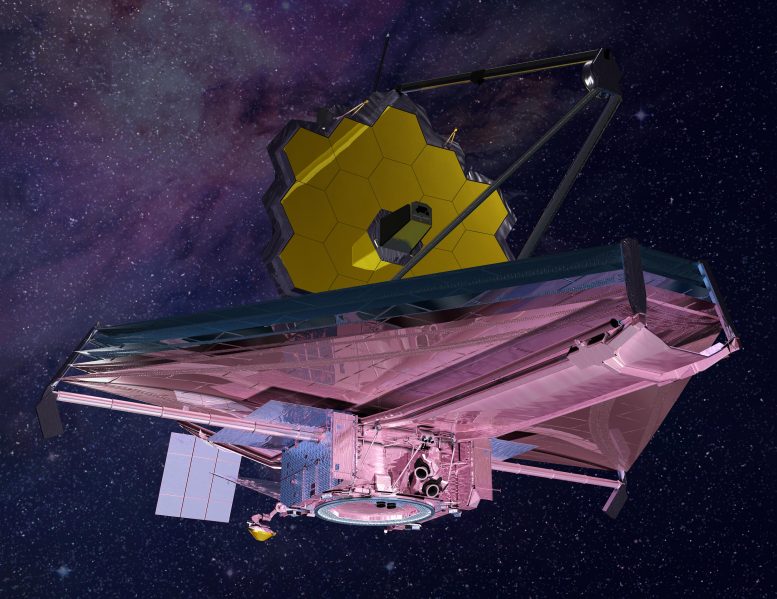


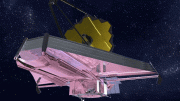
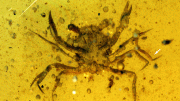
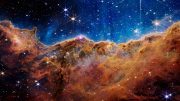
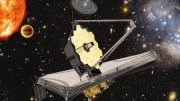
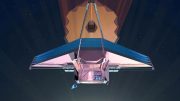
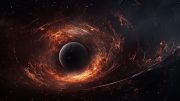
Very Interesting.
A Few thoughts for consideration for the next level Webb and the future.
1. The spectrum of light extends from infra red, visible to Ultra Violet.
2. Future Telescopes need to extend and refine the Weebb to be able to handle the following:
(a) Ultra Violet
(b) Greater and more minute resolution of the Visible Spectrum of Light. As any modern day digital artist will tell you the Colours in the visible spectrum can be millions and not just the seven(VIBGYOR) we learn in High School Physics!
(c) The Ultra Violet Spectrum and its understanding is of critical importance for the survival of the Human Race. WE are a delicate and recent species in the emergence of life compared to many others visible on the planet itself. Current set-up protects us from Cosmic rays. Hopefully long enough for us to figure out better systems and technologies for the future.
(d) The future requires that we need to think beyond the “Eye in the Sky” telescopes and move from just the information and data “gathered and analysed” to insights and wisdom that we need, to be able to minimise the risks to the existence of the species inhabiting the current rock that we are on, and be able to find safer rocks if required, and be able to transport ourselves to these places —- if the need arises in the future!